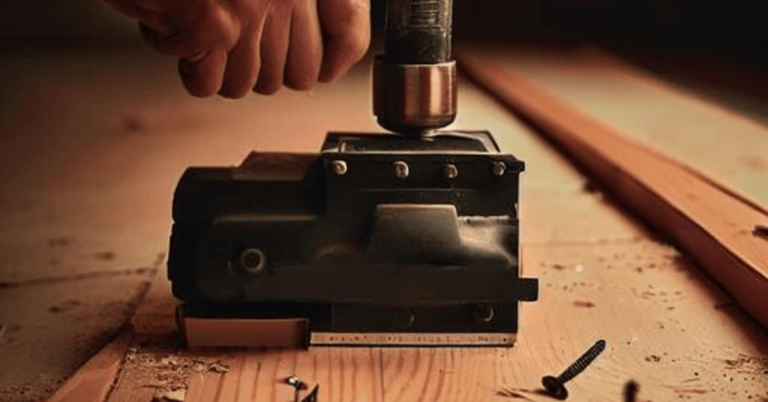The Ultimate Guide to Hardwood Flooring Acclimation
Discover the importance of hardwood flooring acclimation and how to do it right. From stacking techniques to monitoring the process, we guide you to a successful installation.

At our flooring company, we know that proper acclimation is crucial for a successful hardwood flooring installation. Acclimation allows the wood to adjust to the temperature and humidity levels of the space, preventing any warping or cupping after installation. One important step in the acclimation process is properly stacking the hardwood flooring.
In this article, we will share our expert advice on how to stack hardwood flooring for acclimation. First, we’ll explain the importance of acclimation and why it’s necessary to stack the hardwood flooring properly. Then, we’ll dive into the steps you need to take to get your space ready for acclimation.
We’ll give you detailed instructions on how to stack the hardwood flooring, including how many layers to use and how to alternate the direction of each layer. We’ll also share tips for monitoring the acclimation process and ensuring that you’re ready for a successful hardwood flooring installation. With our guidance, you’ll be able to confidently acclimate your hardwood flooring and enjoy a beautiful, long-lasting finished product.
Understanding the Importance of Acclimation for Hardwood Flooring
You don’t want to rush the process of letting your new hardwood floors adjust to the environment they’ll be installed in – it’s crucial for their long-term stability and performance.
Hardwood flooring is a natural material that responds to changes in humidity, so it’s important to acclimate it to the room’s conditions before installation. This means allowing the wood to adjust to the temperature, humidity, and moisture levels of the space it will be installed in.
Humidity control is a critical factor in acclimation. If the wood is exposed to too much humidity, it can expand, leading to buckling, warping, or cupping. If it’s exposed to too little humidity, the wood can shrink and crack. To prevent these issues, it’s important to monitor the humidity levels of the space where the wood will be installed.
You can use a hygrometer to measure the humidity levels and ensure they’re within the recommended range of 30% to 50%.
The acclimation time will vary depending on the type of hardwood flooring you’re installing, as well as the conditions of the room. In general, you’ll need to acclimate the wood for at least three days, but it could take up to two weeks for the wood to fully adjust.
During this time, the wood should be stacked in the room where it will be installed. Make sure to leave space between each plank to allow for air circulation.
By properly acclimating your hardwood flooring, you’ll ensure a successful installation and avoid any issues down the line.
Preparing Your Space for Acclimation
Before beginning the process of letting your new hardwood flooring adjust to your space, it’s important to ensure that the area is prepared for acclimation.
Firstly, choose the location where your flooring will be installed. This could be a room that’s adjacent to the one where the flooring will be installed or a garage. Make sure that the space is well-ventilated and away from direct sunlight.
Secondly, setting the temperature is crucial for the acclimation process. The ideal temperature for acclimation is between 60-80°F with a relative humidity of 35-55%. This temperature range is essential to prevent the wood from expanding or contracting too quickly, which could lead to warping and buckling. It’s also important to keep the temperature consistent throughout the entire acclimation process.
Lastly, clear the space of any objects or debris that may obstruct the airflow and be a tripping hazard. This will ensure that the air can circulate freely around the wood and that it can acclimate uniformly.
Cover the floor with a breathable material such as rosin paper or a drop cloth to protect the wood from any spills or scratches.
Preparing your space for acclimation is a vital step in the installation process of hardwood flooring. By choosing the right location, setting the temperature, and clearing the space, you can ensure that your wood acclimates successfully and that your flooring installation runs smoothly.
Remember that the acclimation process can take up to two weeks, so be patient and let the wood adjust to your space before installation.
Properly Stacking Your Hardwood Flooring
Now that you’ve prepared your space, it’s time to get your new planks ready by arranging them in a neat and organized pile. Properly stacking your hardwood flooring is crucial for optimal acclimation time.
There are several stacking techniques that you can use to ensure that your planks acclimate properly. Firstly, you’ll need to gather your planks and organize them by size. Make sure each plank is facing the same direction and that the tongues and grooves are lined up. Then, stack the planks on top of each other, making sure that there is a small gap between each plank to allow for proper air flow.
It’s also important to avoid stacking the planks too high, as this can cause them to warp or bow. Secondly, you’ll need to place a weight on top of the pile to ensure that the planks are pressed together firmly. This will help the planks to acclimate evenly and prevent any warping or bowing.
You can use anything from a few heavy books to a stack of bricks as a weight, as long as it is evenly distributed across the pile. Leave the planks to acclimate for at least 48 hours, or follow the manufacturer’s recommended acclimation time.
In conclusion, properly stacking your hardwood flooring is an important step in the acclimation process. By following these stacking techniques, you can ensure that your planks acclimate evenly and avoid any potential warping or bowing. Remember to leave the planks to acclimate for at least 48 hours, or follow the manufacturer’s recommended acclimation time, before installation.
Monitoring the Acclimation Process
It’s important to closely monitor how your new planks are adjusting to the environment to ensure a successful installation.
The first step is to make sure the room temperature and humidity levels are within the manufacturer’s recommended range. This helps prevent warping or shrinking of the hardwood planks during the acclimation process. Temperature control is particularly important in areas with extreme seasonal variations.
Another crucial step is to conduct moisture testing before and during the acclimation process. This helps ensure that the planks are not too moist or too dry, which can cause serious problems during installation.
A moisture meter can be used to measure the moisture content of the planks before they are stacked and periodically during the acclimation process. This information helps you determine when the hardwood planks are ready for installation.
It’s important to remember that the acclimation process can take several days or even weeks, depending on the environmental conditions and the type of hardwood flooring. During this time, you will need to monitor the planks closely and make adjustments as needed.
By taking the time to properly stack and monitor your hardwood flooring, you can ensure a successful installation and enjoy beautiful, long-lasting floors for years to come.
Tips for a Successful Hardwood Flooring Installation
Get ready for a smooth and successful installation of your new hardwood floors with these helpful tips!
Choosing the right hardwood is crucial in achieving a successful installation. It’s essential to select a hardwood species that’s appropriate for the area where it will be installed. Hardwood species have varying levels of hardness, and some are better suited for high-traffic areas than others. Also, consider the color and grain pattern of the hardwood to ensure it complements the style and design of your home.
Tools needed for installation are also important to consider. You’ll need a saw, a hammer, a measuring tape, a chalk line, and a level, among other tools. Investing in high-quality tools will make the installation process smoother and ensure that your floors look great in the end. It’s essential to have all the necessary tools before starting the installation to avoid delays and incomplete installation.
Here are some additional tips for a successful installation:
- Let the hardwood acclimate to the room’s temperature and humidity before installation.
- Follow the manufacturer’s installation instructions for the best results.
- Make sure the subfloor is clean, dry, and level before installing the hardwood.
- Take care to stagger the hardwood planks to create a more natural-looking floor and ensure that the seams are not visible.
By following these tips, you can achieve a beautiful and successful installation of your hardwood floors.
Conclusion
Overall, acclimation is a crucial step to ensure the longevity and durability of your hardwood flooring. By properly preparing your space and stacking your flooring, you can improve the acclimation process and ensure a successful installation.
Remember to monitor the humidity levels and temperature throughout the process to make any necessary adjustments. It’s important to follow manufacturer guidelines and consult with a professional if you’re unsure about any aspect of the installation process.
With proper acclimation and installation, your hardwood flooring can add value and beauty to your home for years to come.
